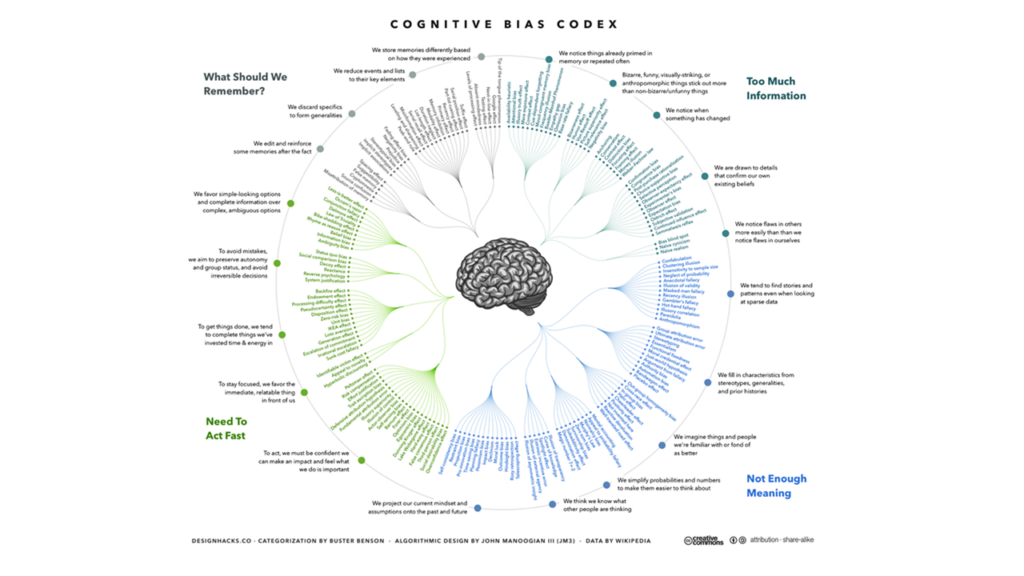The Intersection of Anti-Bias Education and Social Emotional Learning
Blog
Bias plays a key role in our everyday lives, and influences how we interact with people, the decisions we make on a moment-to-moment basis, and even how we learn. Bias refers to a flawed way of thinking often as a result of a heuristic, or a mental shortcut that allows us to infer without reflection and deliberation (West, Toplak, & Stanovich, 2008).
Bias is influenced by the bits of knowledge about people and social groups that we have been exposed to through our own experiences, background and upbringing, as well as through mainstream media. There are many types of identified bias, including confirmation bias, in which we are more likely to believe information that justifies what we already believe, and implicit bias, which includes our attitudes and stereotypes that affect our behavior in an unconscious way.
These biases can impact our attitudes and behaviors towards people of other races, ethnicities, religions, and cultures. Review the following graphic of the Cognitive Bias Codex, and consider your own biases and how they impact your everyday life. Download a PDF version of the Cognitive Bias Codex by clicking here.

Anti-bias education is designed to help students challenge bias, stereotyping, and discrimination. In her blog post “Anti-Bias Education: The Power of Social-Emotional Learning,” Jinnie Spiegler discusses the relationship between anti-bias education and social-emotional learning, and how social-emotional learning can be a powerful tool to help combat stereotyping, bigotry, and racism in our society and world. Consider each of the components of SEL and how they can help to combat bias.
- “Self-Awareness: As we learn about bias, we can consider how our own biases, both implicit and explicit, impact our thinking and our behavior.
- Self-Management: Once we are aware of our biases, and the actions they impact, we can change our thinking and our behavior.
- Social Awareness: Through SEL and anti-bias teaching, students learn about other people, including other cultural perspectives. Through social awareness and learning about other people and topics such as identity, diversity, and stereotypes, students build empathy and learn how discrimination affects others.
- Relationship Skills: As students interact with a diverse group of people, and learn about topics such as identity and culture, they also learn how to build relationships with others that are not like them.
- Responsible Decision Making: Students learn that throughout history, people’s decisions have impacted others in both positive and negative ways, and that their own decisions also have an impact on others, including fighting the injustices in the world through activism.
As educators, it is critical we see the bigger picture of the topics we are teaching. By considering how SEL intersects with anti-bias education, we are working towards not only helping students become the best people they can be, but also empower students to make the world a better place by combating bias, discrimination, and racism.
Dr. Sharrocky Hollie advocates that teachers and students learn more about culture and who we are as cultural beings. His work, outlined in the book Culturally and Linguistically Responsive
Teaching and Learning, focuses on how we as educators can teach in a way that both validates and affirms students’ cultural and linguistic identities. Dr. Hollie’s work intersects with self-awareness as he describes cultural identity through “the rings of culture.” These rings represent the complex cultural aspects that make us up as humans. Each of these rings impacts our thinking and ways of being. This is true of both teachers and students.
The rings identified and focused on by Dr. Hollie are:
- National Culture: The nationality we identify with. This may or may not be the country we were born in or currently live in.
- Ethnic Culture: Includes aspects of surface culture such as food, dress, art, stories, and music, as well as aspects of deep culture such as ways of showing respect, expectations of people of different ages, gender roles, and concepts such as fairness.
- Religious Culture: The religious beliefs and practices people engage in.
- Gender Culture: Related to the activities and behaviors associated with being a girl or a boy. Hairstyles, clothing, toys, and jewelry, for example, as well as people whose gender does not match that of their birth gender.
- Age Culture: Our age and generation influence many aspects of culture, including dress, music, and ways of communicating.
- Socio-economic Culture: Influenced by aspects such as wealth, income, occupation, and levels of education.
- Orientation Culture: Sexual orientation relates to who we love and are attracted to.
Understanding these aspects of culture builds self-awareness. As we consider the various aspects of our culture, we are able to more clearly articulate who we are. It is also clear that the better we know ourselves culturally, the more likely we are to learn about our students’ cultural identities and validate who they are as cultural beings (Villegas and Lucas 2004; Villicana, Rivera, and Dasgupta 2011).
References:
Published May 13, 2016, in Education Week’s Finding Common Ground Blog
Spiegler, J. (2016, May 13). Anti-Bias Education: The Power of Social-Emotional Learning. Education Week. Retrieved from: http://blogs.edweek.org/edweek/finding_common_ground/2016/05/anti-bias_education_the_power_of_social-emotional_learning.html
